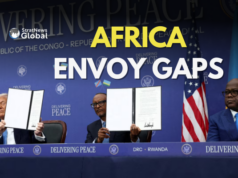An intriguing recent post on Weibo claimed to reveal highly sensitive information regarding the recent Pahalgam attack.
Describing itself as ‘South Asian Studies Newsletter’, it carried documents under the hashtag #India’s Top-Secret Intelligence Suspected To Have Leaked. The alleged Telegram-leaked documents claim to expose covert strategies and communications within India’s external intelligence agency, RAW, regarding Pahalgam.
The documents running to about eight pages, claimed that India carried out a ‘a strategic false flag terror incident in Jammu and Kashmir’ while US Vice President JD Vance was visiting. The objective was to ‘reinforce India’s counter-terrorism narrative on the global stage’ and ‘secure US support’.
One user posted “This should be 100% true. One can tell because as soon as the attack happened, India immediately scrapped the (Indus Water) treaty with Pakistan. Also, the BLA, which is supported by India, has been increasing its activities in Pakistan over the past couple of years- it’s clearly operating at a higher level now.”
But many other netizens questioned the authenticity of the material. @JohnRenThe2nd said, “Can such documents be leaked? Another user @SagaLiang2022 asked “Is there any channel to verify the authenticity?”
User Loong even compared it to the recent case of a journalist being added to the Signal chat group of the US national security adviser, where plans to attack the Iran-backed Houthi group in Yemen were being discussed.
Some observers suggested the documents could be AI-generated.
User @Mushi posted that ‘DeepSeek essence a bit strong’. In other words, DeepSeek, a Chinese-developed large language model, might have been used to create the documents in an attempt to stir online discourse or disinformation.
The incident has highlighted the growing challenge posed by generative AI in the age of digital propaganda. China is notorious for its psy-war capabilities but the so called Pahalgam documents suggest not all are willing to swallow without question.





